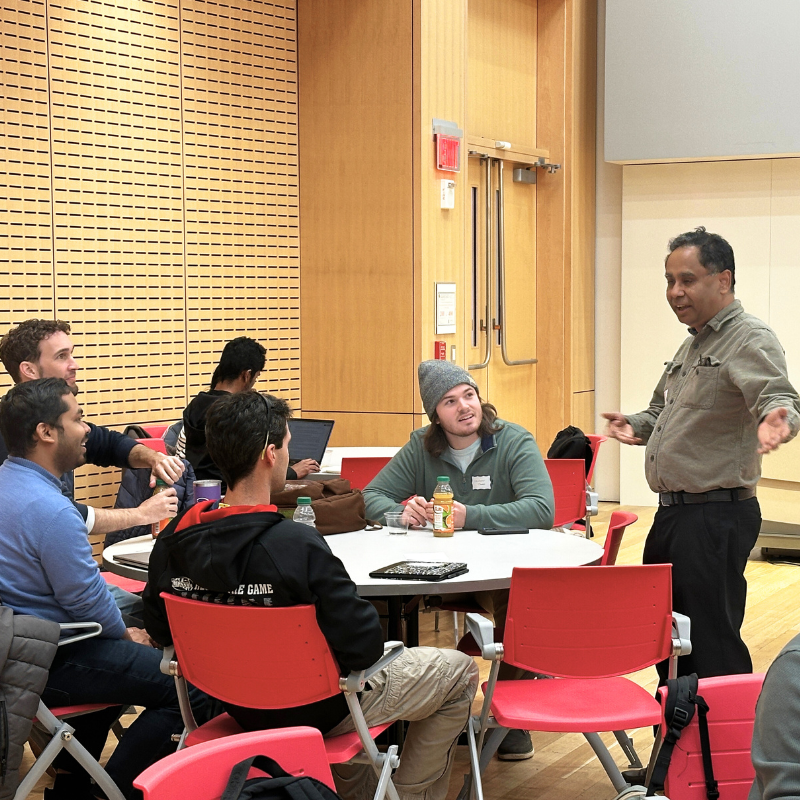News Story
Inspired by Nature: Autonomous Underwater Robotics
Since he was a child, Derek Paley has been captivated by how shoals of fish move fluidly as a cohesive group, almost as if a single organism. As the Willis H. Young Jr. Professor of Aerospace Engineering Education and director of the Collective Dynamics and Control Laboratory at the University of Maryland, Paley is applying his long-standing source of inspiration to the cooperative control of autonomous vehicles.
Fish are particularly interesting for Paley because of their sensory system. He explains that fish have a lateral line system, which is a series of sensors located on their exterior, sometimes appearing on their side as a stripe. With their lateral line sense, fish can perceive the direction and speed of nearby water flow, as well as predators and other obstacles. Paley is equally intrigued by the propulsion system of fish: flapping may be even more efficient than having a propellor.
Paley wants autonomous underwater vehicles to have the same capabilities as fish. Together with a team of graduate and undergraduate researchers in UMD’s A. James Clark School of Engineering, he has built a fish-inspired submarine that helps the engineers explore both fish sensing and propulsion in the context of autonomous robotics. Their latest autonomous underwater vehicle, made of rubber and with a fish silhouette, has sensor nodes replicating the functions of the lateral line. Their goal is to use those sensors in a feedback control loop that emulates fish behavior by allowing the vehicle to detect and respond to hydrodynamic signals.
Inside the vehicle, there is an electric motor attached to a momentum wheel: when the wheel spins one way, the flexible tail propels the submarine similar to the motion of a real fish. In addition, Paley is studying how to make a robotic fish sense and respond to vortices created by other fish. He plans to build more robotic fish in the future in order to create an entire school.
Autonomous underwater vehicles are a natural way to collect in situ measurements of water quality in places like the Chesapeake Bay. In addition to environmental monitoring, Paley’s stealthy fish-inspired robot could eventually be applied to national defense challenges like port and harbor security.
Learn more about Paley’s bioinspired research here.
Learn more about the Collective Dynamics and Control Laboratory here.
Learn more about UMD’s Neutral Buoyancy Research Facility here.
Published June 21, 2018









